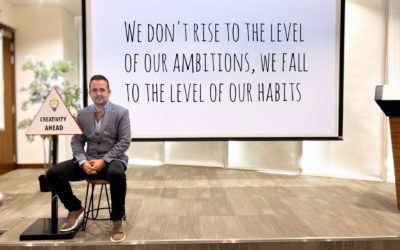What are the Basic Concepts of AI That Modern Leaders Should Understand and Why is it Important for Them to Stay Up to Speed, Even If They Are Not Technical? Estimated reading time: 8 minutes Understanding AI Fundamentals: Essential for informed decision-making. Key...
How Can Hierarchical Companies Adopt a More Agile Structure and Mindset, and What is the Role of Leadership in Achieving This?
Estimated reading time: 6 minutes
- Agility is essential for survival in today’s fast-paced business environment.
- Transitioning involves structural redesign and empowered teams.
- Leadership models agile behaviors to facilitate successful transformations.
- Successful case studies such as ING, Zappos, and Nordstrom illustrate effective practices.
- Continuous learning and iterative processes nurture adaptability.
Table of Contents
- Understanding the Transition to Agile
- Steps for Adoption
- The Role of Leadership
- Case Studies of Successful Agile Transformations
- Conclusion
- FAQ
Understanding the Transition to Agile
Transitioning from a hierarchical to an agile organization involves significant changes in structure, leadership style, and overall workplace culture. Hierarchical companies usually operate with fixed chains of command and centralized decision-making flows. In contrast, agile organizations prioritize flexibility, collaboration, rapid response to market conditions, and empowered teams.
Steps for Adoption
- Redesign Organizational Structure: The first step involves shifting from traditional silos to cross-functional, self-managing teams that can make decisions independently of upper management. Research emphasizes the importance of this structural change, as it dismantles barriers and enhances flexibility (McKinsey, Rutgers Business School, Scaled Agile).
- Empower Teams: To foster agility, organizations must allow teams to proactively respond to change without waiting for managerial instructions. This empowerment boosts efficiency and creates a sense of ownership among team members (Rutgers Business School).
- Open Communication Channels: Establishing new ways for teams and leaders to communicate is crucial. Encouraging management to seek input from team members enhances transparency and facilitates faster decision-making processes (Rutgers Business School).
- Iterative Planning and Delivery: Replacing large, rigid project plans with iterative cycles (sprints) allows organizations to adapt continuously based on feedback and changing conditions (Kvy Technology, McKinsey).
- Continuous Learning and Improvement: Organizations must cultivate a culture where learning from experiments is encouraged, rather than adhering strictly to orders. This mindset nurtures adaptability, as teams are more willing to innovate and improve (ValueX2, Kvy Technology).
The Role of Leadership
Leadership plays a critical role in guiding and sustaining the transition to agility in hierarchical cultures. Here are several key responsibilities:
- Modeling Agile Behaviors: Leaders should exemplify openness, adaptability, and delegation. When leaders embrace these qualities, they set a powerful example for the rest of the organization (Rutgers Business School).
- Facilitating Autonomy: Instead of being directive supervisors, managers should take on the roles of coaches and mentors. This shift fosters an environment of empowerment and trust, which is essential for effective teamwork (McKinsey, Rutgers Business School).
- Managing Cultural Resistance: Leaders need to actively address resistance to change through clear communication, effective training, and by celebrating small victories along the way (McKinsey, Rutgers Business School).
- Maintaining Balance: While fostering agility, leaders must also ensure adherence to requisite rules and standards, especially in industries that are heavily regulated (Rutgers Business School).
- Removing Barriers: Leadership should focus on eliminating bottlenecks in communication and decision-making, thereby simplifying collaboration for teams (Rutgers Business School, Scaled Agile).
Case Studies of Successful Agile Transformations
Examining companies that have successfully transitioned from hierarchical to agile structures provides practical insights for other organizations considering a similar path.
ING Bank
ING transformed its organizational structure by adopting an agile model inspired by tech giants like Google and Netflix. This shift led to the formation of cross-functional squads, granting greater autonomy to teams and resulting in faster product delivery cycles. Senior leaders played a pivotal role by communicating the vision clearly and supporting their teams throughout the transition (McKinsey).
Zappos
Zappos embraced a model known as Holacracy, which eliminated traditional hierarchical roles in favor of self-managed teams. As a result, employees enjoyed greater control over their responsibilities, leading to improved job satisfaction, productivity, and customer service levels. The company successfully ingrained agile principles deeply within its culture, emphasizing self-management and continuous improvement (Kvy Technology).
Nordstrom
Nordstrom applied agile principles across its retail and digital operations, which significantly enhanced its responsiveness to customer feedback and market changes. This transformation improved productivity and customer satisfaction through iterative development, demonstrating the practicality of agile methodologies in a consumer-centric context (Kvy Technology).
Philips
Philips implemented the Scaled Agile Framework (SAFe) to empower teams while flattening organizational layers. This approach led to improved collaboration in health care technology delivery, showcasing the tangible benefits of agility in complex operational environments (Scaled Agile).
Other Notable Examples
Other companies like Spotify and LEGO have also pioneered agile transformations by adopting innovative structures— Spotify with its “squad” model, allowing autonomous, cross-functional teams, and LEGO and Bosch fostering collaboration through iterative development (ValueX2).
Conclusion
Adopting an agile structure and mindset within hierarchical organizations is not merely an option; it is essential for thriving in today’s dynamic environment. Companies can successfully navigate this transformation with strong leadership, structural redesign, and cultural adaptation. The success stories of ING, Zappos, Nordstrom, Philips, and others demonstrate the significant improvements in responsiveness, productivity, and employee satisfaction that stem from embracing agility.
To embark on this journey toward agility, organizations must equip their leaders to model agile behaviors, empower their teams, and remove structural barriers to collaboration and innovation.
If you’re on the brink of this transformation or curious about how to facilitate an agile transition in your organization, feel free to reach out to us. At Inspire Limitless, we specialize in innovation, digital transformation, and practical AI to help companies like yours navigate change successfully. Connect with Marc Mekki directly at marc@inspirelimitless.com or call him at +971 58 526 7209. Let’s inspire limitless potential together!
FAQ
- What is an agile organization? An agile organization emphasizes flexibility, collaboration, and quick responses to change.
- How can leadership facilitate an agile transition? Leaders should model agile behaviors, remove barriers, and empower teams to take ownership of their work.
- What challenges may arise during the transition? Resistance to change, communication barriers, and maintaining a balance between flexibility and compliance are common challenges.
- What are some benefits of adopting an agile mindset? Benefits include increased responsiveness, improved productivity, and enhanced employee satisfaction.








